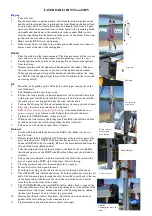
LampSite Solution
Product Description
2 Hardware Architecture
01 (2013-11-30)
Huawei
Proprietary and Confidential
Copyright © Huawei Technologies Co., Ltd.
6
Typical Configurations
Number of
Modules
BBU
Configurations
LTE: Two cells per RHUB
UMTS: Two cells per RHUB, without
the combining among different RHUBs
4 RHUBs + 16
pRRUs
1 UMPT + 3 LBBPds
+ 2 WBBPfs
LTE: One cell per RHUB
UMTS: Two cells per RHUB, with the
combining of every two cascading
RHUBs
4 RHUBs + 16
pRRUs
1 UMPT + 2 LBBPds
+ 1 WBBPf
LTE: Two cells per RHUB
UMTS: Two cells per RHUB, with the
combining of every two cascading
RHUBs
4 RHUBs + 16
pRRUs
1 UMPT + 3 LBBPds
+ 1 WBBPf
LTE: One cell per RHUB
UMTS: Two cells per RHUB, with the
combining of every four cascading
RHUBs
4 RHUBs + 16
pRRUs
1 UMPT + 2 LBBPds
+ 1 WBBPf
LTE: Two cells per RHUB
UMTS: Two cells per RHUB, with the
combining of every four cascading
RHUBs
4 RHUBs + 16
pRRUs
1 UMPT + 3 LBBPds
+ 1 WBBPf
2.2 BBU3900
For more details about the BBU3900, see
BBU3900 Description
.
2.3 RHUB3908 Equipment
The RHUB3908 converges the common public radio interface (CPRI) data from the RF
remote device. The main functions of the RHUB3908 are as follows:
The RHUB3908 works with the BBU and pRRU to provide indoor coverage.
In the downlink, the RHUB3908 receives the baseband data from the BBU, splits the
data into different routes, and sends it to pRRUs. In the uplink, the RHUB3908
converges the data from pRRUs and sends the data to the BBU.
The internal PoE module in the RHUB3908 provides power to the pRRU.











































